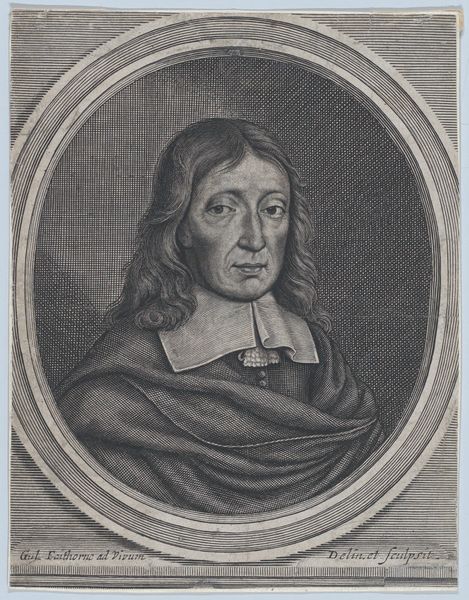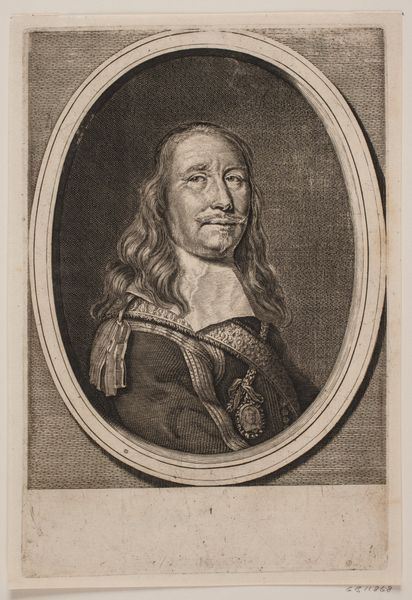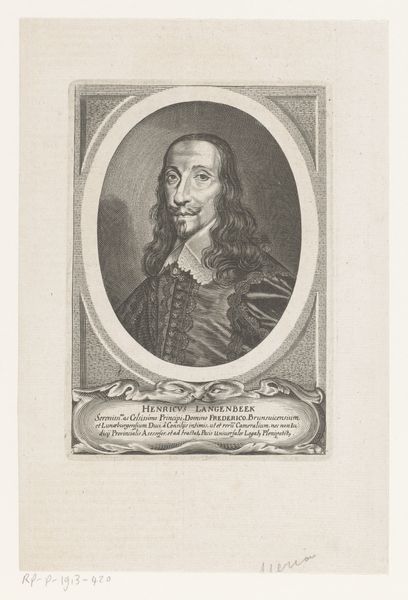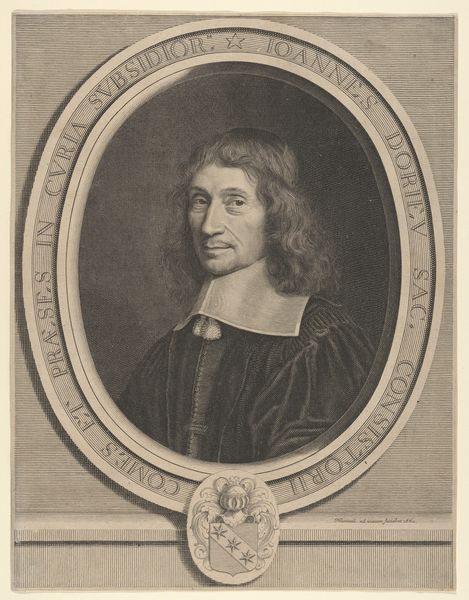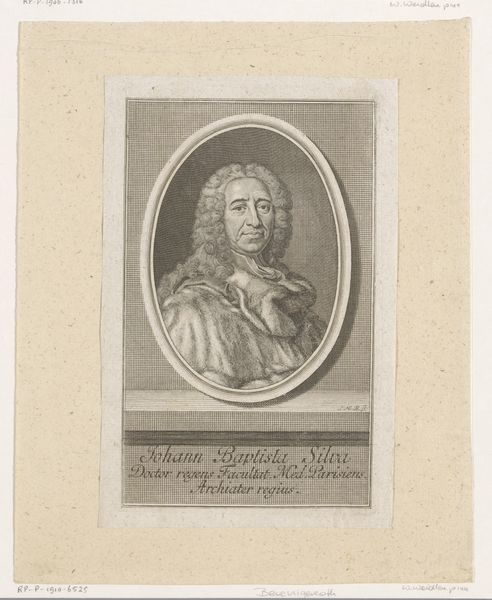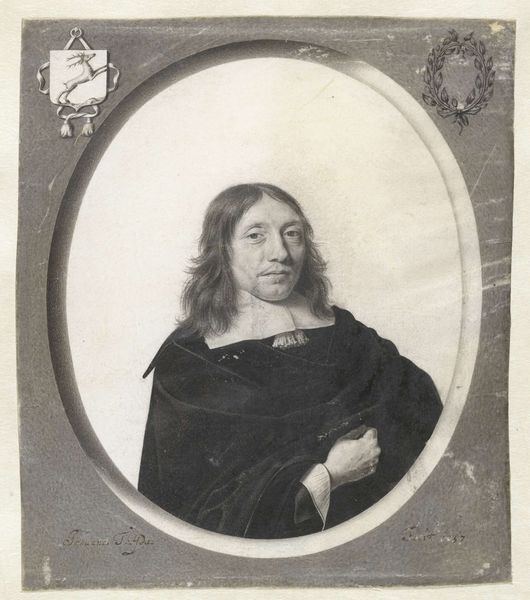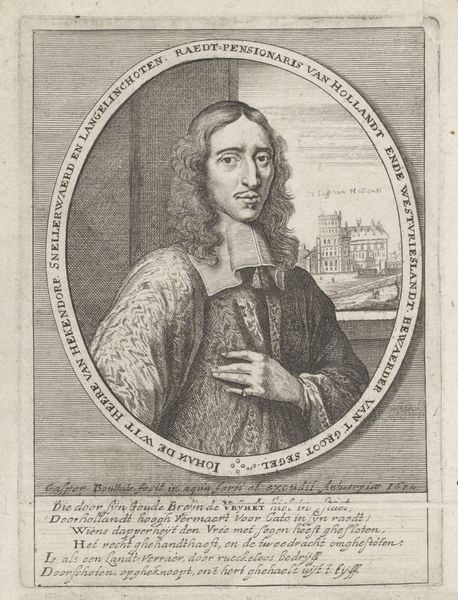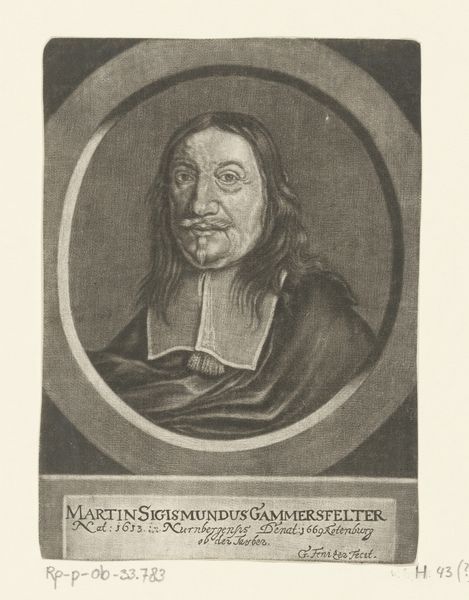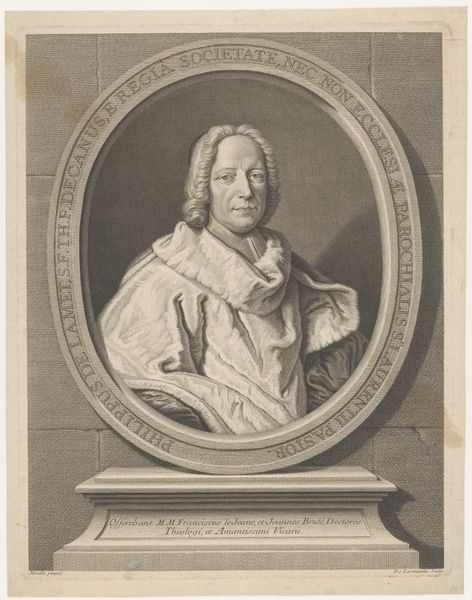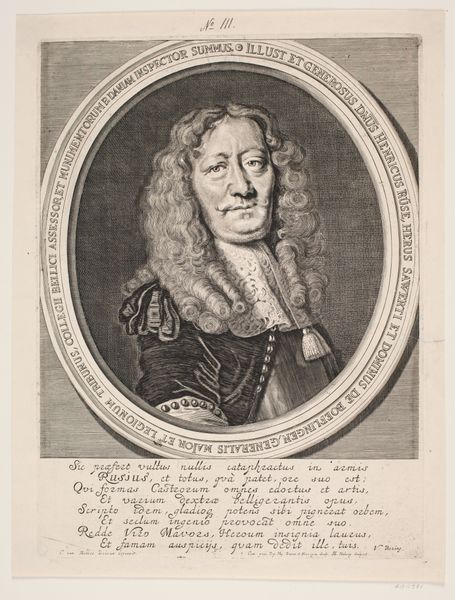
drawing, print, metal, engraving
#
portrait
#
drawing
#
baroque
#
dutch-golden-age
# print
#
metal
#
men
#
engraving
Dimensions: Sheet: 7 3/4 × 5 3/4 in. (19.7 × 14.6 cm)
Copyright: Public Domain
Editor: So, here we have William Faithorne the Elder's engraving of John Milton, dating back to 1670. It has a very formal feel to it, almost austere. What strikes you when you look at this portrait? Curator: Beyond the immediate impression of formality, I see a potent image of intellectual authority, yet one touched by vulnerability. Think about Milton’s own political writings and the context of their creation during a period of immense social upheaval in England. This image exists not just as a representation of Milton, but also of the radical ideas circulating at the time. Editor: Radical ideas? In what sense? Curator: Milton was a fierce defender of free speech and republicanism, challenging the established order of the monarchy. This portrait was created after the Restoration. The weight of that historical tension infuses the image. Do you see any elements that hint at that struggle? Editor: Perhaps the slight unease in his expression? Or the plainness of his attire, a contrast to the opulent portraits of royalty? Curator: Precisely. And consider the medium: engraving, a relatively accessible form of reproduction, allowing for wider circulation of his image and, by extension, his ideas. The portrait becomes a political statement, a form of resistance through representation. It suggests not only the sitter's likeness, but alludes to issues around censorship, liberty, and individual conscience. What does that make you consider? Editor: That's fascinating. I never considered how even a portrait could function as a form of political activism. It makes you wonder how artists continue to embed resistance in portraiture today. Curator: Absolutely, and that's how we keep these conversations going through the centuries.
Comments
No comments
Be the first to comment and join the conversation on the ultimate creative platform.
